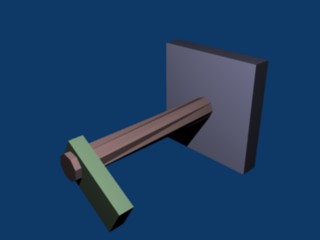Roger that... so yea you basically want what i'm trying to do. I'll be the guinea pig this go around so hold tight for another month or two and we'll see how it works out
Trying to think of the easiest way to explain how/why the spring rate increases when you cut the spring without getting too technical.
[erased 3 different things I typed...]
In the fewest words possible- there's less material to "deflect". As you remove spring material from a coil spring, which is basically a torsion bar, it requires more force/torque to achieve the same amount of rotation.
Trying to explain this with an intuitive type example...thinking about torsion bars because they're easier to visualize and because coil spring equations are derived from torsion bar equations.... using the image below what does your gut tell you if I ask you this question, "if we shorten the bar a lot, does it get harder or easier to twist it the same amount?". And conversely, if I make that bar really really really long, does it get harder or easier to twist it?
To give an equation type response.... The spring rate (k) of a coil spring is calculated as follows:
k = (some variables) / (some other variables x the number of active coils)
So since the spring rate is inversely proportional to the number of active coils (given the other variables remain constant), as the number of coils decreases, the spring rate increases.
...if that doesn't help, you can come help me install my parts next month and we'll chat it over a few beers and greasy/busted knuckles









 Reply With Quote
Reply With Quote